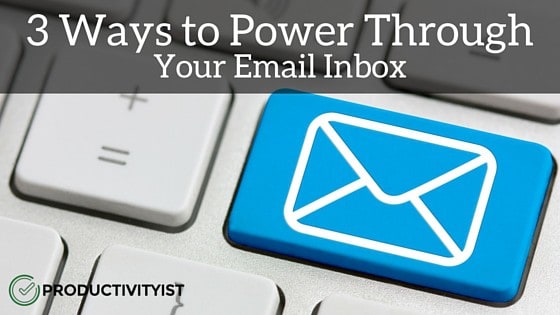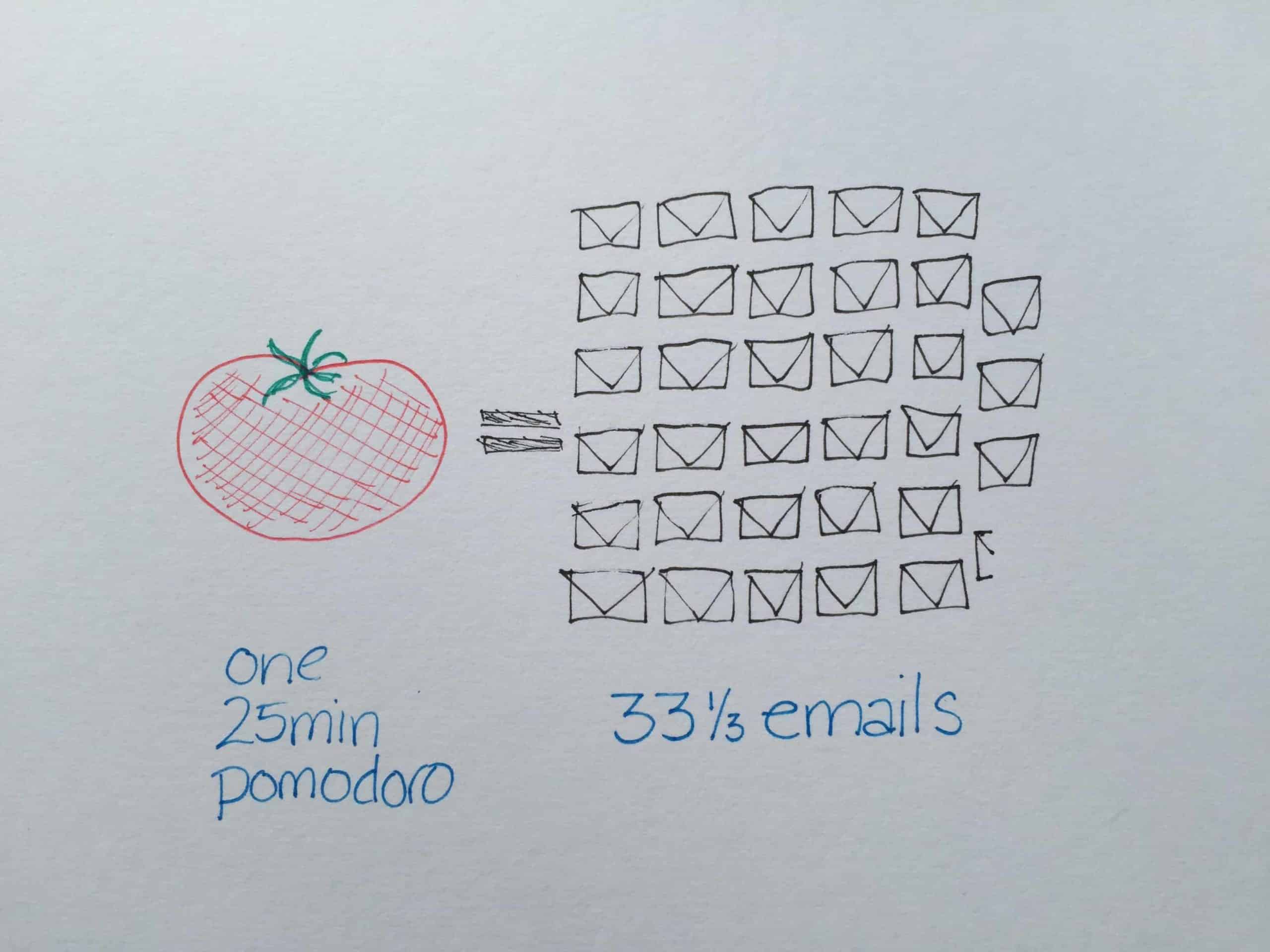
The email inbox is a terrible place to spend the majority of your time.
Don’t get me wrong – email is a fantastic tool for communication. The problem is how long we stay connected to it. You must make sure you disconnect enough to do the other aspects of our work. I know that email is part of what we need to do every day, but it isn’t the only thing we need to do.
And it certainly shouldn’t pull us from the important work we need to focus on.
Are you ready to get out of email inbox and into your deeper work in a simple and efficient way? If so, I’ve put together 3 options for you.
Let’s get you out of that email inbox, shall we?
Want email inbox help FAST? Then download The Email Extractor Kit that I’ve assembled for you. You’ll get my transformative email workflow that helps me get through my inbox simply and quickly along with some time-saving email templates you can use to speed up the sending of emails that you’re typing in far too often. You can get The Email Extractor Kit for FREE here.
Option 1: Sort Email Differently
By default we review our email by the date it was sent to us. That would be fine if the natural way to respond was the same way we deal with food in our fridge.
When you’re running low on milk and you need to buy new milk, you don’t start drinking the new milk before the older milk is gone. Why? Because the older milk would spoil. The same goes for any food that will expire if not consumed. You eat the oldest food first, right?
With email, apps give us the view of our newest emails first. That means the older emails work their way down the list and lose their ability to grab our attention. The new email messages are bold and stand out at the top of the pile. Meanwhile, the older emails lose their sheen and fall further into obscurity.
I’m a big believer in sorting emails in the first in, first out manner. But that doesn’t necessarily work for everyone – and it doesn’t mean you need to sort messages by date either.
The easiest way to sort your email differently is to sort by date. But you need to “flip the switch” at the same time.
What do I mean by that? I mean you need to showing your oldest messages first. I know this will terrify those who have been letting emails fester in their inboxes for a long time. But it’s worth doing because you’ll get to see what should have your attention and what can be eliminated altogether. Even though Gmail doesn’t appear to let you sort this way, there is a way to make it work. Check out the GIF below to see what I mean.

If you’re using Outlook or Mail.app for the Mac you can make this change as well. The email app I use on iOS (Front) also allows for oldest messages to appear first. (I’m not sure about other iOS or Android email clients sport this feature.)
One thing Gmail doesn’t do (at least out of the box) is allow you to sort emails by sender. This is something I’ve recommended to people who want to make sure they don’t miss anything from someone and are tired of wading through their email inbox to find messages from individuals who have more importance than others.
You can do this in various mail applications – again both Outlook and Mail.app do this. But the only way to do this in Gmail effectively is to use a filter.
Since I don’t need to sort by sender, I haven’t set up such a filter (or set of filters), but if you’re adept at Gmail you can make it happen easily. The website GTricks offers several sorting options here.
Option 2: Set Better Limits With Your Email Inbox Workflow
I have a few ways that I set limits with email and I think that anyone who is struggling with their email inbox (or inboxes) grabbing more time than they’d like would be wise to create constraints that are reasonable.
One constraint is the constraint of amount of email you’ll process every time you view your inbox. Set an amount of messages you’ll deal with each time – no matter what type or length the message is – you view your email.
Looking for a reasonable number to start with? I’ve found the average time it takes for one of my clients to deal with an email to be 45 seconds. In one 15 minute span with one client, they were able to deal with 20 email messages. Some of those messages were archived directly. Others were sent to their task app of choice, and others were given a response. If you do the math, you could deal with 80 emails in one hour of uninterrupted time.
And that’s the other constraint you could use: time.
Instead of leaving your email app open all day long (or having notifications ping you every time an email lands in your inbox), you could set aside chunks of time throughout your day to check email. I suggest 25 minute time blocks to align with The Pomodoro Technique.

With one 25-minute “pomodoro” you could deal with 33 and one-third email messages. If you did that three times per day, you could knock out 100 emails in just 75 minutes. You’d be able to give thoughtful and focused responses to emails. That’s because you’d only be dealing with them during your time slots and for a predetermined amount of time.
Don’t think you can get away with setting constraints with your email inbox? Give it a try for a week. Set up three time blocks in a day to check email. Set an audible reminder on your mobile phone that you set to three different times in the day. Then work in sprints on your email for 25 minutes at a time. If you’re looking for times to choose, I’ll give you some to consider:
- 10:00 AM: This keeps you from checking it first thing in the morning. It allows you to stick to your agenda to start the day rather than get derailed by the agendas of others.
- 1:00 PM: Right after you take your lunch break is a good time to check in with email.
- 4:00 PM: This will be your last email review of the day. It allows you to tie up any loose ends from the day. This also helps you prepare your strategy for the next day. (After you’re done with this final email check, you should give your own agenda – your to do list – a check to make sure that you’ve earmarked what got done and what you need and want to do going forward.)
Laura Vanderkam only checks email twice per day. I do so three times per day. This study suggests I’ve got that number about right – as opposed to the 15(!) times the average person checks email. I’d say you should give it a try too.
Option 3: Use My 3Mail Workflow
I process email three times a day and I have a pretty deliberate framework for doing so. I have shared a brief audio clip describing the workflow.
I’ve put together The Email Extractor Kit that is designed to help you empty your inbox and free yourself from the grip of your email app. Click here to get The Email Extractor Kit for FREE.
Email can be a real pain point for productivity. There are many ways that you can keep it from causing stress. Here’s what guest author David Ly Khim wrote about that. The key is to make sure that email is part of what you do… and not the only thing that you do. You need to get out of the inbox and into your work. Email isn’t the place where that can happen easily.
Give these tactics I’ve suggested a try and you’ll spend less time wading through email and more time moving things forward.